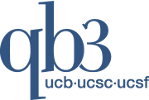Antigen immunoprecipitation for mass spectrometric analysis
1.0 Introduction / Description
As one component of the validation pipeline, the ability of each rAB to bind to its cognate antigen in a cellular environment will be evaluated by immunoprecipitation assay in native cell lines known to express the target protein. Mass spectrometric analysis of immunoprecipitated antigen will provide measurement of target peptide spectral counts and the relative amounts of IP’d target, the pull-down of related proteins (thus providing an indication of specificity) and the pull-down of other target-bound proteins (thus providing additional data of potential biological significance).
2.0 Overview steps
- 2.1 Culture cells expressing the target of interest
- 2.2 Collect cells in lysis buffer, lyse by sonication and collect lysates
- 2.3 Form the antibody-target complex by rAb incubation in lysate
- 2.4 Immunoprecipitate protein complexes with streptavidin beads
- 2.5 Wash beads, elute and flash freeze immunoprecipitated material
- 2.6 Trypsinize protein complexes and extract/desalt peptides for MS analysis
3.0 Materials
Glassware/Plasticware/ Instrumentation
- 10 cm tissue culture dishes
- Zip tips (Millipore catalogue # ZTC18M960)
- Mass Spec Plate (Axygen scientific from VWR – Cat#PCR-96-FS-C
Reagents
- Tris-HCl (SigmaT5941-1KG)
- NaCl
- NP-40 (Pierce / Thermo, Cat #28324)
- Protease/phosphatase inhibitors (Pierce/Thermo, Cat #78440)
- benzonase (Sigma, Cat #E1014-5KU)
- streptavidin magnetic dynabeads (used for biotinylated rAbs) (Invitrogen, Cat #65602)
- anti-FLAG M2 magnetic beads (used for FLAG-tagged rAbs) (Invitrogen, cat#MM8823)
- Protein A magnetic dynabeads (used for mAbs) (Invitrogen, Cat # 10001D)
- Protein G magnetic dynabeads (used for mAbs) (Invitrogen, Cat # 10003D)
3.3 Solutions
- AFC (High Salt) (Lysis buffer)
Final concentration
Stock
For 40 mL 10X buffer
Tris-HCl, pH7.9
10 mM
2 M
2 mL
NaCl
420 mM
5 M
33.6 mL
NP-40
0.1%
10%
4 mL
H2O
0.4 mL
Add protease inhibitor just before use.
Add 1 mM Ni to the buffer for demethylases. - FC (Low Salt) (Dialysis/Wash buffer)
Final concentration
Stock
For 40 mL 10X buffer
Tris-HCl, pH7.9
10 mM
2 M
2 mL
NaCl
100 mM
5 M
8 mL
NP-40
0.1%
10%
4 mL
H2O
26 mL
Add protease inhibitors just before use, same as high salt.
- Wetting and Equilibration solution70% CAN in 0.1% FA
- Washing solution 100% H20 in 0.1% FA
4.0 Preparing cell lysate (HEK293 cells)
NOTE: Use non-autoclaved eppendroff tubes and tips!
- 4.1 Everything on ice or at 4 oC unless indicated otherwise.
- 4.2 Thaw frozen cell pellets immediately with 1X High Salt AFC buffer (1 mL per plate) with protease and phosphatase inhibitors
- 4.3 Perform 3 freeze-thaw cycles by moving samples between ethanol/dry ice and 37 oC water bath, mixing frequently to prevent temperature from reaching above 4 oC
- 4.4 Sonicate 5 times, 0.3 s on/0.7 s off (per 1 ml), (8 per 2 ml, 12 per 5 ml)
- 4.5 Incubate for 30min at 4 oC with benzonase nuclease to remove RNA and DNA (to the final concentration of 12.5-25 units/mL).
- 4.6 Centrifuge at 13,000 rpm for 30 min at 4 oC. Discard pellet and retain supernatant.
- 4.7 Measure protein concentration (nanodrop), usually 7-10 mg/mL
5.0 Antibody binding
- 5.1 Use 3-5 mg per IP. Add ~2 μg of antibody into the lysates and incubate at 4 oC overnight (depending on the stability of the proteins), 2hrs incubation is sufficient for most antibodies.
- 5.2 Wash with high salt AFC buffer 20 mL of magnetic beads per IP, 2x.
- (NOTE: The beads are different for different types of antibodies; flag-tag rABs – use magnetic beads from SIGMA; avi-tagged rABs use streptavidin dynabeads from Life Technologies; IgGs- use protein A/G dynabeads from Life Technologies)
- 5.3 After last wash resuspend in 20 mL of low salt AFC buffer and add 20 mL to the lysates with antibodies.
- 5.4 Incubate for 2-4 hr at 4 oC.
- 5.5 Wash the beads with 1 ml of 1x low salt lysis buffer 3 times at 4 oC for 5 -10 min and 2x with low salt lysis buffer without detergent.
- FOR IP-WB we just elute with protein loading buffer (60 microliters) and load 30 mL on protein gel.
- 5.6 Elute 4x50 mL of 0.5 M ammonium hydroxide, flash freeze in liquid nitrogen
- 5.7 Dry and perform trypsin digest according to protocol below.
6.0 Trypsin digestion
NOTE: All the steps should be done in HPLC grade water or 50mM NH4HCO3
NOTE: Use non-autoclaved tubes and tips
NOTE: Make sure you work in a clean environment to prevent keratins and polymer contamination, hood is not necessary but careful work environment is essential!
- 6.1 Dry NH4OH samples in the speed vac (about 1 – 1.5 hrs)
- 6.2 Reconstitute in 44 mL of 50 mM NH4HCO3
- 6.3 Add 1 mL of 100 mM TCEP-HCL . Shake at 37 oC for 1 hr
- 6.4 Cool to room temperature and add 1 mL 500 mM iodoacetamide. Shake at room temperature and in dark for 45 mins
- 6.5 Add 1 mg Trypsin. Shake overnight at 37 oC
- 6.6 Add 2 mL acetic acid to stop the reaction
- 6.7 Store at 4 oC
- 6.8 The volume is 50.5 mL
7.0 Desalting Protocol (for Zip-Tip)
NOTE: The maximum volume for Zip Tip is 10 ml
- 7.1 Equilibration:
- 7.1.1 Aspirate 10 mL Wetting and Equilibration solution into zip-tip
- 7.1.2 Dispense waste
- 7.1.3 Repeat twice
- 7.1.4 Aspirate 10 mL with washing solution
- 7.1.5 Dispense waste
- 7.1.6 Repeat twice
- 7.2 Binding and washing:
- 7.2.1 Aspirate 10 mL and dispense into the sample, repeat at least 20 times so all the peptides are bound to the tip (do not throw away the samples – just pipette up and down)
- 7.2.2 Aspirate 10 mL of washing solution twice and dispense
- 7.3 Elution:
- 7.3.1 Dispense 10 mL of Wetting and Equilibrating solution into 96 well mass spec plate four times (Final sample volume is 40 mL)
- 7.3.2 Dry the samples
- 7.4 Perform mass spec analysis
Please send corrections, modifications and suggestions to smiersch@recombinant-antibodies.org.



